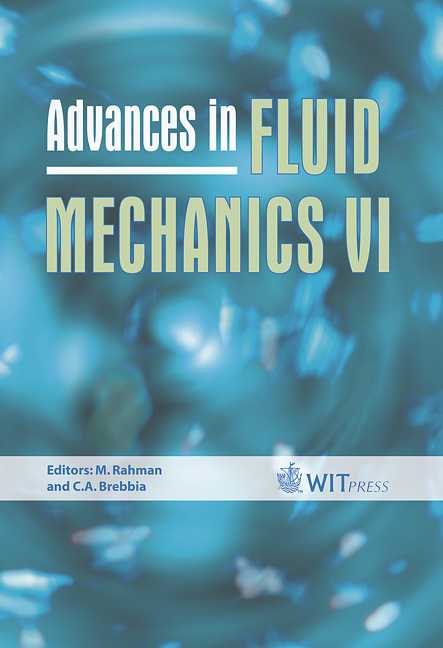Flow And Heat Transfer Characteristics Of Tornado-like Vortex Flow
Price
Free (open access)
Transaction
Volume
52
Pages
10
Published
2006
Size
1,640 kb
Paper DOI
10.2495/AFM060281
Copyright
WIT Press
Author(s)
Y. Suzuki & T. Inoue
Abstract
A tornado-like vortex flow has been investigated for both effective local ventilation from the floor of a room and local heat transfer control without the circumferential thermal diffusion. A relatively stable axisymmetrical tornadolike vortex is generated in a water tank by a vertically uniform swirl. The overall flow structure of the tornado-like vortex has been categorized into three regions: the outer free vortex region, the inflow layer (the Ekman boundary layer), and the vortex tube. The present tornado-like vortex flow was investigated experimentally and also agrees qualitatively with this flow structure. In the free vortex region, the tangential velocity distribution shows a Rankine-like vortex and has good agreement with an approximate formula characterized by the radius and the maximum tangential velocity of the forced vortex. A numerical analysis using an axisymmetrical laminar flow model is carried out. To eliminate the effect of swirl supplying methods, a virtual cylindrical surface of the radius (Rout) is considered, where an axisymmetrical flow is established. All experimental and computational data of the flow characteristics of the tangential velocity profile in the free vortex region are well-arranged by the Reynolds number based on the flow rate and the swirl Reynolds number based on Rout. The flow structure in the Ekman boundary layer is characterized by the tangential velocity profile in the free vortex region and the height where the radial velocity is half its maximum value. The heat transfer characteristics of the heated plate with uniform heat flux located on the bottom are investigated both experimentally and computationally. The forced convective heat transfer of the tornado-like swirling flow is handled in the same way as the laminar forced convective heat transfer on a flat plate, by using the maximum radial velocity component in the Ekman boundary layer. Keywords: tornado-like vortex, swirl flow, flow structure, heat transfer control.
Keywords
tornado-like vortex, swirl flow, flow structure, heat transfer control.





